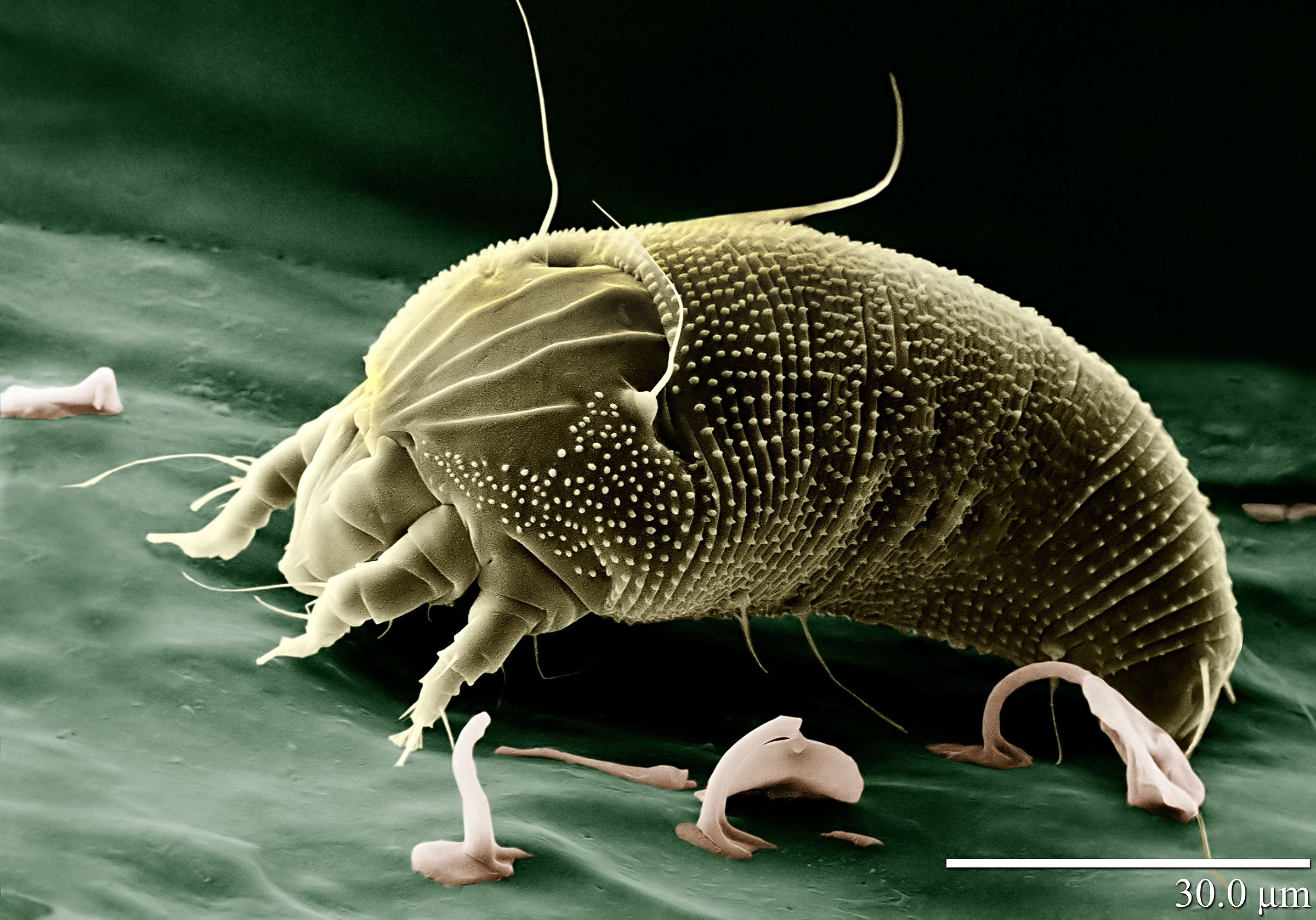Do I Have Dust Mites?
We don’t like to imagine sharing our homes with these little buggers but yes, you likely have dust mites. They are houseguests in 84% of U.S. homes according to AllergicLiving.com. Although many people may never notice, others including children, are sacrificing their good health for these unwelcome bedfellows. Read on for ways to control dust mites, and reduce allergy symptoms.
What are dust mites?
A relative of the tick, dust mites are microscopic 8-legged insects that are just beyond the scope of normal vision – so you won’t be able to look for them. They thrive in humid environments and climates, increasing their population in the Summer months and peaking in the Fall. While their life cycle is short – they live for approximately 3 months, they reproduce quickly, with females laying over 100 eggs.
Once you discover dust mites, the problem can escalate quickly. Unlike a similar unwelcome pest, the bed bug, dust mites do not bite humans. They feed on the dead skin cells we leave behind every day that enter dust in the home, including pet dander. The problem with dust mites is with the fecal matter they produce, that can be extremely potent allergens entering our airways and making us very sick, from rashes to respiratory issues.
Where are dust mites in my home?
Dust mites are most commonly found in bedding, pillows, fabrics and upholstered areas of your home such as sofas, carpets and curtains. They are microscopic and just beyond the scope of normal vision.
Can I eliminate Dust Mites?
Because dust mites are a primary cause of allergies, and especially asthma in children, understanding how to rid of them and reduce symptoms is critical to your health. Here are 5 things you can do to reduce dust mites and allergic symptoms:
- Keep cool. Lower the temperature in your home in order to reduce humidity and control moisture. A good target is 70°F.
- Run a dehumidifier. Dust mites require moisture, which is why they thrive in places like Florida, but not dry climates like Arizona. 50% humidity is a good target.
- Remove the food source. Vacuum carpets and upholstery with a HEPA filter often to rid of dust, and continue to dust regularly with a damp cloths. Dusting with a dry cloth won’t remove the culprit.
- Introduce extreme temps. Throw pillows, sheets, comforters, clothing, drapes and other fabric objects in your home can be cycled in your dryer at a high temperature to kill remaining mites. Optionally, an overnight in a large freezer will also do the trick.
- Wash and encase bedding. Wash your bedding often and purchase special hypoallergenic cases that will keep small and microscopic pests from finding a permanent home in your pillows and mattresses.
If you believe dust mites are in your home, contact us for an inspection. If you believe your health has been impacted, it is important to contact a medical professional.
Stock Environmental is an environmental consulting firm servicing all of New Jersey and New York. If you have questions, or would like to schedule an inspection, give us a call at 732-383-5190 or e-mail info@stockenvironmental.com.






